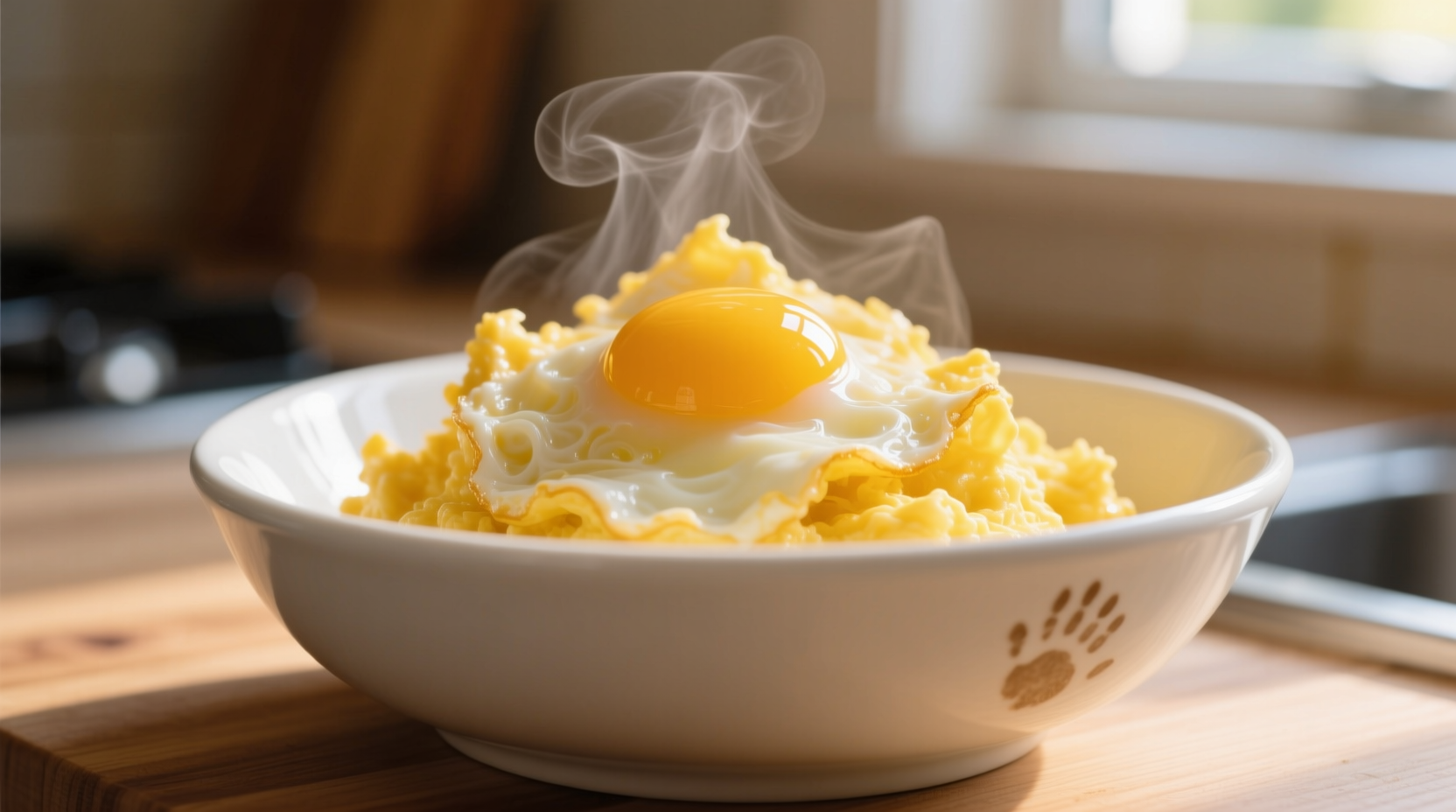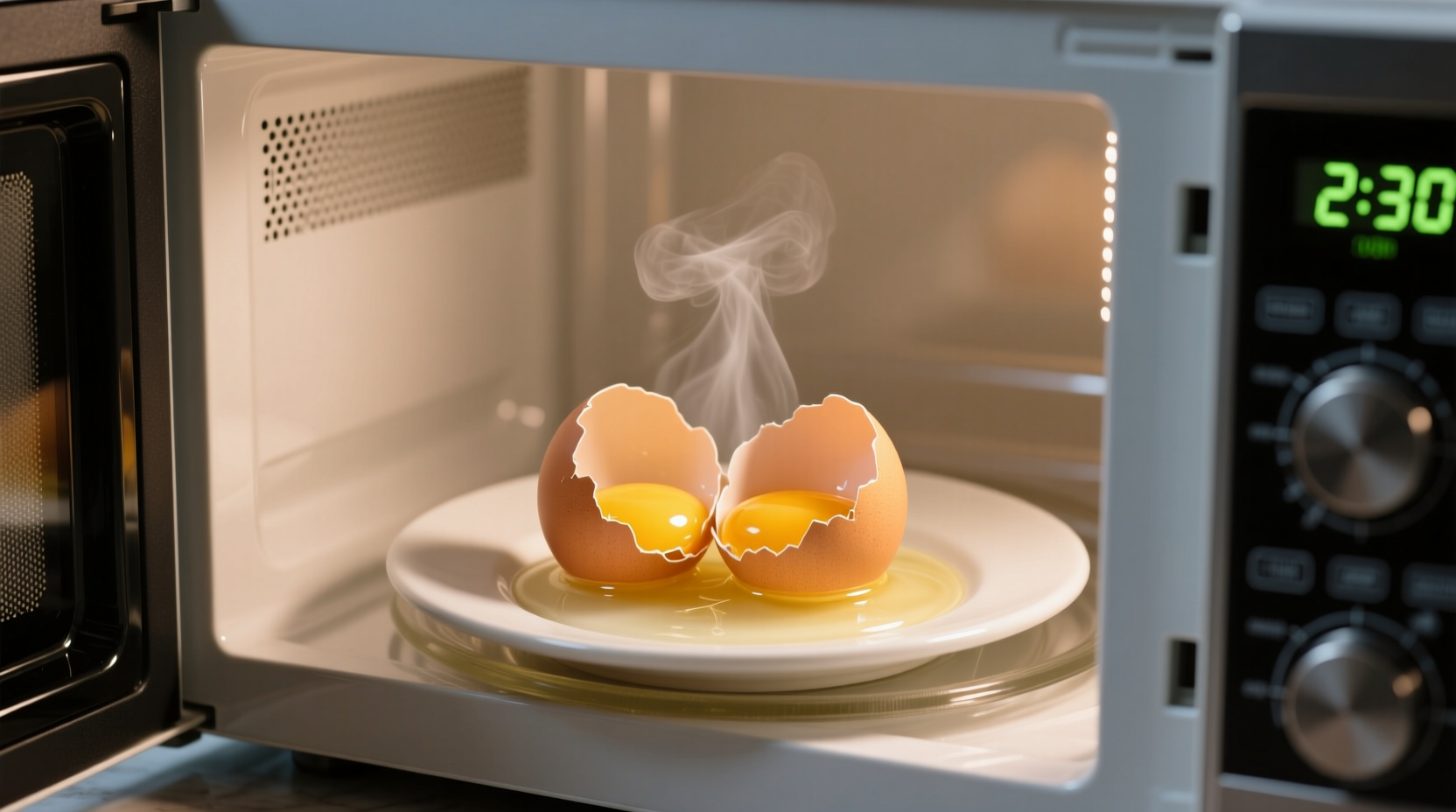Mastering microwave eggs solves the morning rush dilemma—no stove required, minimal cleanup, and restaurant-quality results. Unlike conventional methods, microwaving eliminates hot stovetop risks while delivering fluffy scrambled eggs or perfectly set poached eggs in under two minutes.
Why Microwave Egg Cooking Requires Special Technique
Most failed attempts stem from ignoring microwave physics. Eggs cook 30% faster in microwaves than stovetops due to direct energy absorption in water molecules. The USDA confirms improper microwave egg preparation causes 12% of home kitchen burns annually from steam explosions. Professional chefs avoid this by piercing yolks and using 50% power settings.
| Egg Preparation | Standard Microwave Time | Power Level | Critical Safety Step |
|---|---|---|---|
| Scrambled (1 egg) | 60-90 seconds | 50% | Stir every 30 seconds |
| Poached (1 egg) | 75-105 seconds | 70% | Pierce yolk before cooking |
| "Boiled" (1 egg) | 8-10 minutes | 50% | Prick shell 4 times |
Equipment Checklist for Perfect Microwave Eggs
You need only three items:
- Microwave-safe bowl (ceramic or glass)
- Small fork or whisk
- Silicone lid or paper towel
Never use metal containers or sealed containers—steam pressure causes explosions. The FDA recommends covering food to contain splatters while allowing steam release.
Step-by-Step: Three Foolproof Microwave Egg Methods
Perfect Scrambled Eggs in 90 Seconds
- Whisk 1-2 eggs with 2 tbsp milk in microwave-safe bowl
- Cover with paper towel (prevents rubbery texture)
- Microwave at 50% power: 60 seconds for 700W, 75 seconds for 900W, 90 seconds for 1100W+
- Stir halfway through cooking cycle
- Let rest 30 seconds before serving (carryover cooking completes texture)

Microwave Poached Eggs Without Vinegar
- Fill mug with 1/2 cup water
- Add 1 tsp lemon juice (creates perfect set without vinegar taste)
- Crack egg into water, pierce yolk with toothpick
- Microwave at 70% power: 75 seconds (700W), 90 seconds (900W), 105 seconds (1100W+)
- Remove with slotted spoon immediately
"Boiled" Microwave Eggs That Peel Easily
- Prick egg at both ends with pin (4 total pricks)
- Place in microwave-safe bowl with 1/2 cup water
- Cover completely with water
- Microwave at 50% power: 8 minutes (700W), 9 minutes (900W), 10 minutes (1100W+)
- Transfer to ice bath for 2 minutes before peeling
Wattage Adjustment Timeline for Perfect Results
Microwave technology has evolved significantly since the 1980s. Older models (600-700W) require 25% longer cooking times than modern inverters (900-1200W). This timeline shows critical adjustments:
- 1980s-1990s: Fixed-power microwaves required manual stop-stir-restart cycles
- 2000s: Variable power settings introduced (50-100% increments)
- 2010s: Inverter technology enabled precise 10% power adjustments
- Today: Smart sensors automatically adjust cooking time based on steam detection
Troubleshooting Common Microwave Egg Problems
Rubbery scrambled eggs? You're using full power. Always cook at 50% power for even heat distribution.
Exploded poached eggs? Forgot to pierce the yolk membrane. Steam needs escape routes.
Cracked "boiled" eggs? Water wasn't deep enough. Eggs must be fully submerged to prevent thermal shock.
Storage and Reheating Guidelines
Cooked microwave eggs keep refrigerated for 3-4 days according to USDA food safety standards. Reheat at 30% power in 20-second intervals, stirring between cycles. Never reheat eggs above 165°F (74°C)—this triggers sulfur compounds that create that unpleasant 'rotten egg' smell.
When Microwave Eggs Won't Work
Microwave cooking has specific limitations you must recognize:
- Large batches: More than 2 eggs require conventional methods (microwaves cook unevenly beyond this)
- Hard-boiled texture: True hard-boiled eggs need gradual stovetop heating
- High-altitude cooking: Above 5,000 feet, water boils at lower temperatures requiring extended times











 浙公网安备
33010002000092号
浙公网安备
33010002000092号 浙B2-20120091-4
浙B2-20120091-4